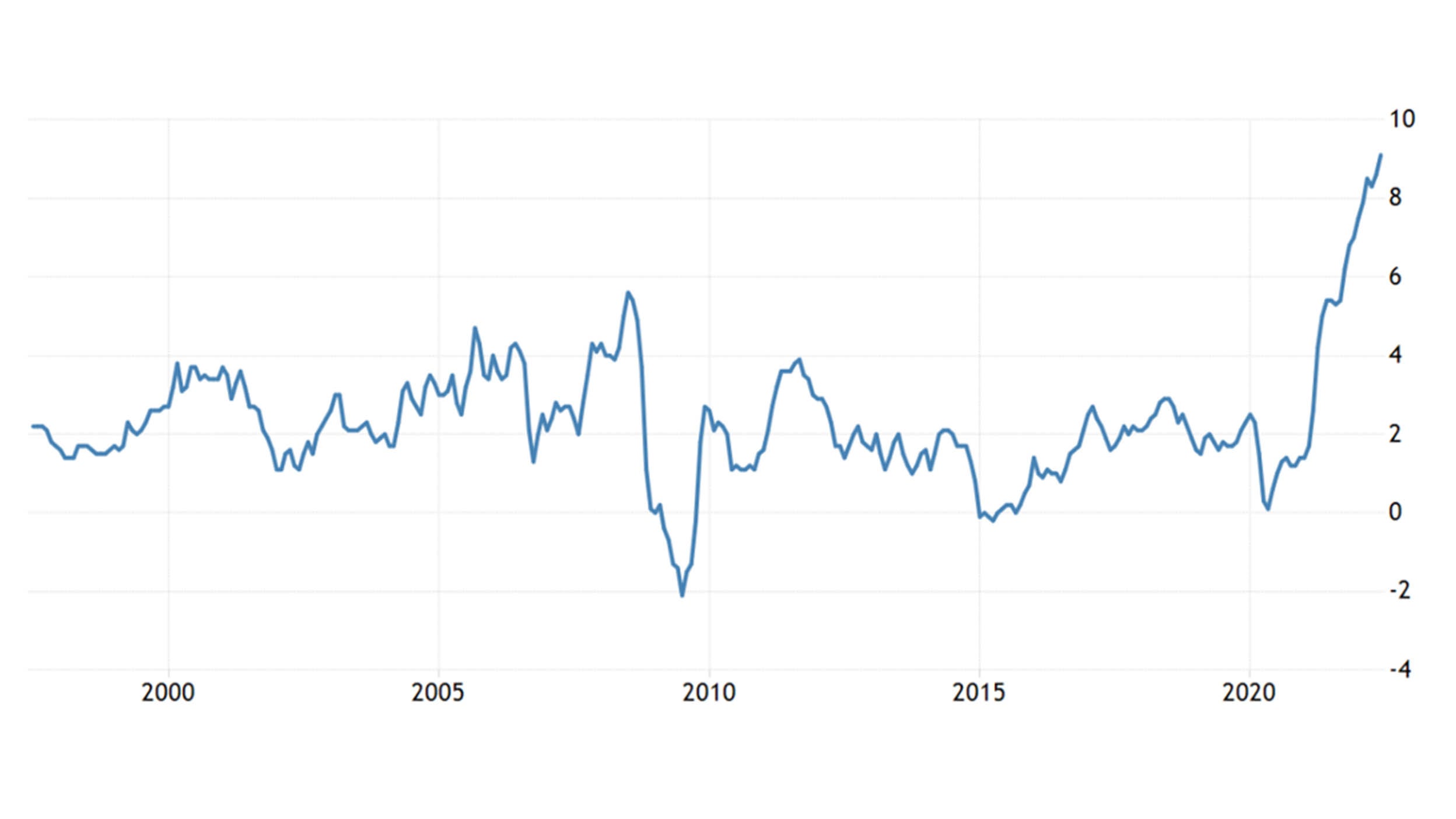US Inflation Hits Four-Decade High of 9.1%

US equities have suffered their worst 1H performance in decades – though recently stocks have edged up in a bear-market rally in hopes that the June inflation print may start to show signs of easing and that the Fed could also let up on their aggressive monetary tightening.
Headline inflation trudged up again in June to a blistering 9.1% y/y from 8.6% in the prior month, likely cementing another 75bps policy rate hike from the Fed in their end-July meeting.

Source: tradingeconomics.com, as of July 14, 2022
The Fed is unlikely to hike rates of 100bps this month
While June’s CPI print could suggest that it’s becoming less likely that the Fed is able to orchestrate a soft landing, not all is doom and gloom.
Firstly, commodity prices have recently started to fall steadily and sharpy while wage growth has also started to moderate in recent months and may have passed its peak. This backdrop is very different than a month ago – the economy is clearly starting to slow which should lead to inflation pressures waning in the coming months.
Still, that doesn’t suggest that inflation has already been tamed. It’s true that we’re seeing an improvement in supply chain bottlenecks in places like China and added energy supply from US strategic oil reserves, though the recent recovery in the services sector has led to an increase in stickier items such as rent and healthcare services.
This leads me to believe that the Fed is unlikely to hike rates of 100bps later this month though we are far from over the Fed tightening cycle – which historically ends when the policy rate is above inflation. The Fed uses its preferred personal consumption expenditures index to gauge inflation – currently at 5.2%1.
In order for the Fed to sustainably ratchet down high levels of persistent inflation, I believe the Fed will be forced to raise policy rates to a degree that would genuinely damage the labor market. So far, unemployment in the US has held at 3.6%, at a 50-year low2 and employers added 372,000 jobs3 last week, above estimates.
Investment Implications
While US equities appear more attractive at these valuation levels and the US economy as a whole is in decent shape – I believe US stocks could likely continue experiencing a bit of volatility as growth slows and inflation remains higher for longer.
A key part of the US treasury yield curve inverted recently and the manufacturing and services sectors’ PMI (purchasing manager’s index) declined. I’m also keeping a close eye on the labor data as well as Q2 corporate earnings and the GDP print – which could disappoint.
Instead, I believe investors could be pivoting their capital towards regions where monetary policy remains accommodative or where growth could rebound in the 2H of the year – such as in Japan and China, respectively.


